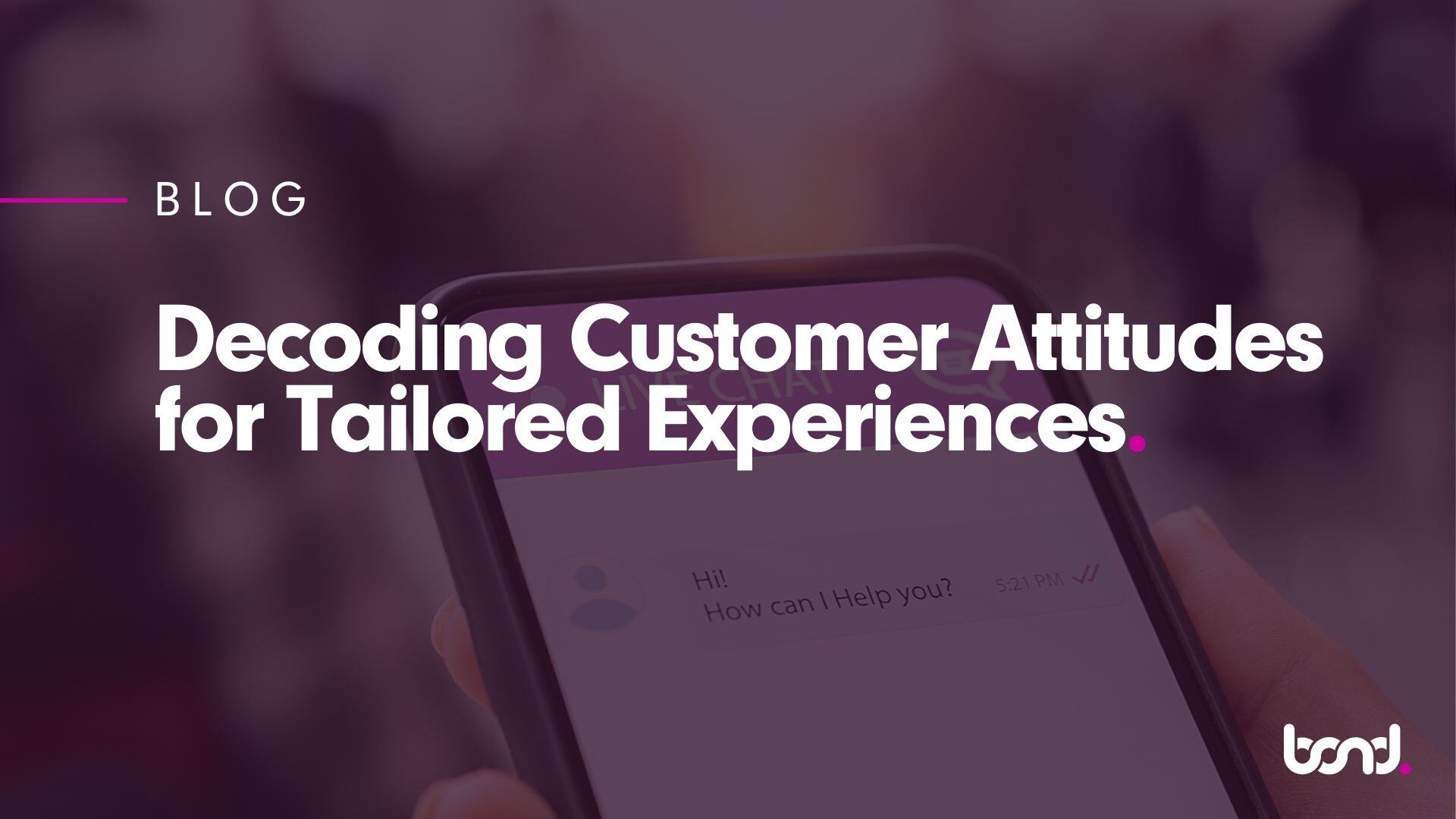Content Writer
Blog
The dynamic between customers and brands—and the value exchange therein—is undergoing a profound transformation. AI's ability to process and analyze less structured data points is only growing, and businesses can now react with more nuanced and curated customer experiences. This shift moves beyond the simple binary opt-in/out decisions of a customer; rather, it’s a shift enabling brands to engage with their clientele in more meaningful and personalized ways. The promise of AI for customer experience extends far beyond simple data aggregation for analysis purposes. Brands, instead, must strive to unlock the hidden potential within each customer interaction, driving meaningful, insight-backed engagement and, as a result, fostering long-term loyalty. The wealth of information that businesses now have at their fingertips allows them to craft experiences that feel uniquely tailored to each individual, and this—we know—is the expectation of many. According to The 2024 Bond Loyalty Report, when consumers see themselves reflected in the brands that they interact with, the result is a significant lift in advocacy, retention and spend.
AI is transforming the very nature of customer engagement, creating a dynamic feedback loop that continuously refines and improves the customer journey. This cycle of continuous improvement is pivotal for establishing a sense of equivalent value exchange within loyalty settings, where customers feel their data and feedback are met with tangible benefits. In fact, more than 80% of Americans are comfortable with their data being shared as part of a loyalty partnership, especially if it means that they’ll get preferred benefits in return (The Bond Loyalty Report, 2024).
There is a wealth of opportunity to be had when brands enhance their capabilities for collecting and processing zero-party data (ZPD)—data that customers willingly provide. Imagine the possibilities when customers explicitly and openly share their preferences or suggest improvements, leading to a better overall experience. Not only does this facilitate greater shared value creation, but it also helps build stronger brand equity.
The time has finally come for credit card teams to play a unique role.
Banks have long sought feasible solutions for creating Enterprise Loyalty, and the stakes are getting higher. The fight to retain share of wallet, while customers are contending with record inflation, higher interest rates, and employment uncertainty, is intensifying. This is happening while even more new competitors are providing customers an easy approach to assembling their own custom collection of financial offerings to meet their needs. As such, brands should be thinking about how they can maximize the utility of their existing loyalty programs across their full business enterprise.
Strategies, business cases, and systems currently supporting credit card loyalty programs offer a pragmatic starting point. The best programs in the past decade are using broader data sources and tighter connectivity to marketing technologies to produce more refined offers and communications to engage and motivate cardholders. As a result, seasoned systems and strategies are set to positively intervene and drive the right behaviors across multiple lines of business, driving financial return back to the bank well beyond cards and payments. They are set to positively intervene and drive the right behaviors across multiple lines of business.
What's in the report:
- Defining Enterprise Loyalty
- Measuring the intensity of Enterprise Loyalty in the Financial Services Sector
- Benefits of Enterprise Loyalty for the Financial Services Sector
- Enterprise Loyalty Implementation Checklist
- What should companies watch-out for when considering implementing Enterprise Loyalty?
- Why the Financial Services Sector Needs to Consider this Strategy
- Breaking Down the Barriers
In 2020, the world went into mass hysteria as a then unknown virus touched down on almost every continent on the globe. Citizens, brands, governments, and manufacturers around the world quickly pivoted to tackle what was soon to become one of the largest pandemics to have ever been recorded in modern history. What most people didn’t know was how long it was going to last and how it was going to change their lives. With more people at home, we saw businesses focused on the home quickly flourish and businesses reliant on people out of the home quickly perish. One thing is for certain: your morning commute, at least in the western hemisphere, has changed from sitting in traffic in your car, listening to podcasts and radio, to rolling out of bed to your dining room table or home office (if you’re lucky).
As the role of the home changed, so did the role of the car. According to the Center for Automotive Research, 90% of people will not be going back to an office full-time. How will drivers continue using their cars? Households are busier and louder than ever, and with the introduction of connectivity, panoramic sunroofs, and enhanced sound, the car is becoming the new, mobile office. How will automotive manufacturers continue to plan features to support the future role of the car, as post-pandemic life currently remains unpredictable?
At CES 2021, representatives across the automotive industry, including GM, Panasonic, Audi, and Robert Bosch all agreed on one thing: the pandemic has provided the greatest opportunity to not only optimize automotive technology to fit the new lifestyles of global consumers, but to also personalize the experience to move the car from the third most utilized space to the second. One example of this discussed by Panasonic Automotive is the concept of private sound bubbles, whereby passengers in the same car can all listen to their own music without disrupting the other passengers, while drivers are equipped with "Whisper Agents" that will share driving directions quietly in their own zone.
The Consumer Electronic Show this year was a fully prerecorded virtual affair, with ubiquitous floating people in squares on our screens. The keynote events had nearly natural scripts presented by one of the conglomerates convincing us that our daily world will change for the better. One word comes to mind when I want to summarize the technological acceleration and business pitches that percolated through every panel discussion: adoption.
With the online holiday shopping frenzy just around the corner, Bond announced our truly exciting partnership with Uber Direct, Uber’s retail-focused delivery service that just launched in Canada.
Holding on to customer loyalty will be a steep hill to climb as the sale of MEC will see it become a privatized company. This is a critical change to the type of business MEC had promised its customers who essentially are their owners – taking away their democratic decisioning power and putting its core promise of a socially conscious retailer at risk.





